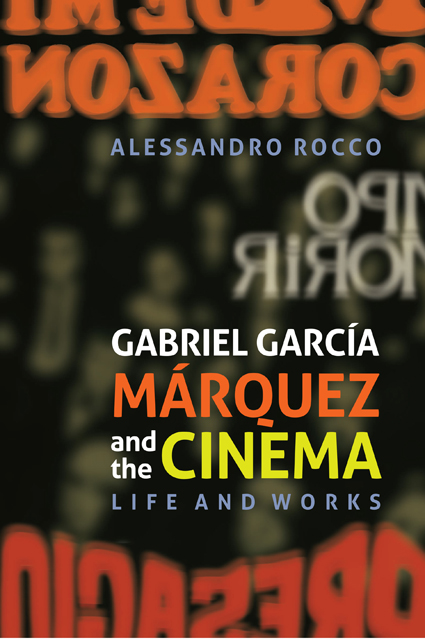Book contents
- Frontmatter
- Dedication
- Contents
- List of Illustrations
- Acknowledgements
- Preface
- 1 The Cinema in the Life of García Márquez
- 2 Tiempo de morir
- 3 Films from the 1970s: The Ghosts of Realism
- 4 Screenplay and Revolution: ¡Viva Sandino!
- 5 Magic Realism in the Cinema
- 6 Six Episodes for Cinema and Television: Amores difíciles
- 7 Con el amor no se juega
- 8 The Fantastic on Television: Me alquilo para soñar
- 9 History and Tragedy: Edipo Alcalde
- Afterword: Works by García Márquez Adapted for the Cinema
- Bibliography
- Index
- Frontmatter
- Dedication
- Contents
- List of Illustrations
- Acknowledgements
- Preface
- 1 The Cinema in the Life of García Márquez
- 2 Tiempo de morir
- 3 Films from the 1970s: The Ghosts of Realism
- 4 Screenplay and Revolution: ¡Viva Sandino!
- 5 Magic Realism in the Cinema
- 6 Six Episodes for Cinema and Television: Amores difíciles
- 7 Con el amor no se juega
- 8 The Fantastic on Television: Me alquilo para soñar
- 9 History and Tragedy: Edipo Alcalde
- Afterword: Works by García Márquez Adapted for the Cinema
- Bibliography
- Index
Summary
This book focuses on Gabriel García Márquez’s relations with the world of cinema. Its purpose is twofold: to explore a less well-known but still highly significant area of his activity as a writer, and to establish a new angle or point of view from which to understand his astonishing narrative skills and powers of invention. Far from being an occasional occupation, taken on as opportunity arose or need dictated, García Márquez’s film work forms an intrinsic part of his overall aesthetic and literary poetics, albeit with differing emphases and with significant discontinuities.
There is no doubt that cinema was an abiding passion in García Márquez’s career, taking different forms and showing varying degrees of success and failure. It first took the form of film criticism, notably a regular column in the daily El Espectador, which introduced serious film criticism into Colombia for the first time. He then took up writing for the cinema, producing more than twenty screenplays, some of them also for television. He was also indefatigable in promoting Latin American cinema through the Fundación Nuevo Cine Latinoamericano, and was remarkably supportive of the development of young directors, setting up the School of Cinema and Television in San Antonio de los Baños in Cuba
Thus the book’s primary aim is to present a detailed study of García Márquez’s wide-ranging filmography, which has never received a comprehensive, systematic analysis. My thesis is that it should be recognised as an integral part of the author’s narrative output, and thus brought into the mainstream of studies and criticism concerning his literary and cultural activity.
This approach calls into question the conventional assumption that the author of a film is its director. If the film is seen as the telling of a story, then the author – or authors – of the narrative becomes no less important than the director. This book sets out to show that the screenwriter is the author not merely of the written text or screenplay of the film but also of the narrative that unfolds as it is projected on the cinema screen. This holds true despite all the changes that can come about as these two elements – written screenplay and film narrative – interact.
- Type
- Chapter
- Information
- Gabriel García Márquez and the CinemaLife and Works, pp. xiii - xviPublisher: Boydell & BrewerPrint publication year: 2014

